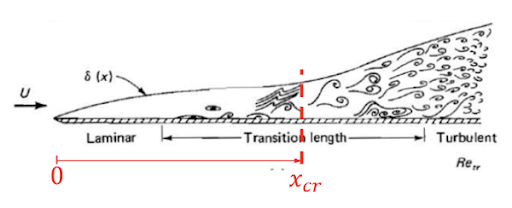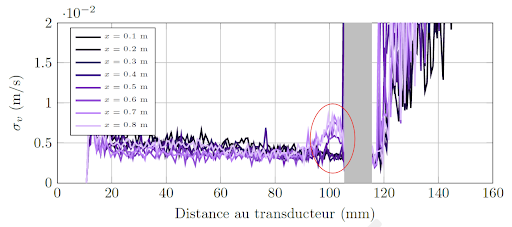Study of boundary layer of a plane plate - Laminar-turbulent transition
The objective of this work was to study the behavior of the boundary layer forming in front of a plane sheet plunged in the water breaking the free surface, at a constant traveling speed. And a particular interest was focused on the position of the laminar-turbulent transition in the boundary layer and the frictions generated by the boundary layer.


The measurements were done with the UB-Lab P, which is a UVP (Ultrasonic Velocity Profiler), measuring monostatic one component velocity profiles.
In this proof-of-concept study, only the σv(y) profile along the axis normal to the sheet of the standard deviation of the distribution of the normal velocity to the sheet was measured and studied. The transducer was placed on the same side of the sheet as the observed boundary layer.
The repetition of σv(y) profiles measurements at different (x, y) positions on the sheet allowed to clearly identify the laminar-turbulent transition zone of the boundary layer for three types of sheets. In each case, it has been observed that the boundary layer transitions earlier (ie. at lower Rex) in the region of the free surface (z < 8cm). It has also been measured that a lower roughness of a sheet gives a higher transition Rex. And the addition of a surface perturbation transversely invariant for the flow allowed the triggering of the turbulent transition of the boundary layer.

This study was carried out by Antoine Dode of the LadHyx laboratory, France, as part of the award of the Call for Projects - UVP Springboard he received.
You can watch the video on his experience feedback here
